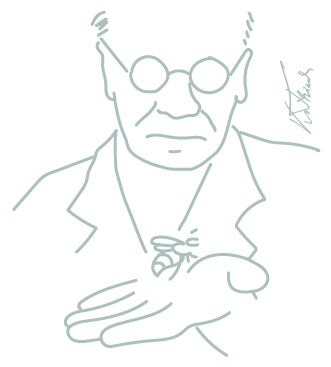Use of propolis ethanolic extract as natural bee pollen preservative intended for human consumption
DOI:
https://doi.org/10.52559/eunk.v2i1.32Keywords:
antimicrobial activity, bee pollen, bioactive compounds, propolis, microbiological qualityAbstract
We propose to evaluate the use of propolis as a preservative of fresh bee pollen intended for human consumption. A quantitative in vitro assay was performed to determine the antimicrobial activity of a propolis ethanolic extract over culturable heterotrophic mesophilic bacteria and molds and yeasts from fresh bee pollen during 22 days. The chemical characteristics of the propolis extract were also determined. The results of the quantitative antimicrobial assay showed that neither of the control treatments showed an inhibitory effect similar to the propolis ethanolic extract. The antimicrobial activity was due to the presence of bioactive compounds of propolis and not because of the alcohol present as a solvent. This is the first work that presents the combination of both bee products, propolis and pollen, in order to improve the conservation of fresh bee pollen avoiding the drying process. The results of the in vitro assay were encouraging as the antimicrobial action of propolis ethanolic extract against bacteria and molds/yeasts from fresh bee pollen was excellent.
Downloads
References
Agüero, M., Lima, B., Svetaz, L., Sánchez, M., Zacchino, S., Feresin, G.E., Schmeda-Hirschmann, G., Palermo, J., Wunderlin, D. and Tapia, A. (2010). Argentinean propolis from Zuccagnia punctata cav. (Caesalpinieae) exudates: phytochemical characterization and antifungal activity. Journal of Agriculture and Food Chemistry, 58, 194–201. doi: 10.1021/jf902991t. DOI: https://doi.org/10.1021/jf902991t
Baldi, B., Grasso, D., Chaves Pereira, S., & Fernández, G. (2004). Caracterización bromatológica del polen apícola argentino. Ciencia Docencia Tecnología, 29, 145–181.
Balzarini, M., Di Rienzo, J.A., Tablada, M., González, L., Bruno, C., Córdoba, M., Robledo, C.W., & Casanoves, F. (2013). InfoStat Version, Argentina, Universidad Nacional de Córdoba.
Bankova, V., Popova, M., & Trusheva, B. (2014). Propolis volatile compounds: chemical diversity and biological activity: a review. Chemistry Central Journal, 8, 28. doi: 10.1186/1752-153X-8-28. DOI: https://doi.org/10.1186/1752-153X-8-28
Barrera Bello, E., Gil Loaiza, M., García Pajón, C.M., Durango Restrepo, D.L, & Gil González, J.H. (2012). Use of a coating formulated with propolis for postharvest handling of papaya (Carica papaya L. cv. Hawaiian) fruits. Revista Facultad Nacional de Agrarias Medellín, 65, 6497–6506.
Chaillou, L.L., & Nazareno, M.A. (2009). Bioactivity of propolis from Santiago del Estero, Argentina, related to their chemical composition. LWT - Food Science and Technology, 42, 1422–1427. doi: 10.1016/j.lwt.2009.03.002. DOI: https://doi.org/10.1016/j.lwt.2009.03.002
Chang, Z.Q., Leong, W., & Chua, L.S. (2021). Statistical approach to reveal propolis as a potential biopreservative for fruit juices. Future Foods, 4, 100051. doi: 10.1016/j.fufo.2021.100051. DOI: https://doi.org/10.1016/j.fufo.2021.100051
Cibanal, I.L., Fernández, L.A., Kreeper, G., Pellegrini, C.N., & Gallez, L.M. (2019). Avances en el desarrollo de un biofungicida: caracterización físico química actividad antifúngica de propóleos. Agrociencia Uruguay, 23 (2), 1–10. doi: 10.31285/AGRO.23.83. DOI: https://doi.org/10.31285/AGRO.23.83
De-Melo, A.A.M., Estevinho, M.L., & Almeida-Muradian, L.B. (2015). A diagnosis of the microbiological quality of dehydrated bee-pollen produced in Brazil. Letters in Applied Microbiology, 61, 477–483. doi: 10.1111/lam.12480. DOI: https://doi.org/10.1111/lam.12480
De-Melo, A.A.M., Estevinho, M.L., Sattler, J.A.G., Souza, B.R., Freitas, A.S., Barth, O.M., & Almeida-Muradian, L.B. (2016). Effect of processing conditions on characteristics of dehydrated bee-pollen and correlation between quality parameters. LWT - Food Science Technology, 65, 808–815. doi: 10.1016/j.lwt.2015.09.014. DOI: https://doi.org/10.1016/j.lwt.2015.09.014
Fernández, L.A., Cibanal, I.L., Paraluppi, A.L., de Freitas, C., Gallez, L.M., & Ceccato-Antonini, S.R. (2019). Propolis: a nonconventional strategy for the control of Dekkera bruxellensis in the ethanolic fermentations. Semina Ciencias Agrarias, 40 (5), 2071-2078. doi: 10.5433/1679-0359.2019v40n5p2071. DOI: https://doi.org/10.5433/1679-0359.2019v40n5p2071
Gallez, L., Kiehr, M., Fernández, L., Delhey, R., & Stikar D. (2014). Antifungal activity in vitro of propolis solutions from Argentina against two plant pathogenic fungi: Didymella bryoniae and Rhizotocnia solani, Journal of Apiculture Research, 53 (4), 438-40. doi: 10.3896/IBRA.1.53.4.08. DOI: https://doi.org/10.3896/IBRA.1.53.4.08
Khalaf, D.S., Rustem, A.O., & Sharef, P.H. (2014). Waxing of gouda cheese by using bee wax with different concentration of propolis. Journal Agriculture Science Technology B, 4 (6), 501-507.
Margaoan, R., Marghitas, L.A., Dezmirean, D., Mihal, C.M., & Bobis, O. (2010). Bee collected pollen – General aspects and chemical composition. Bulletin UASVM Animal Science Biotechnology, 67, 1–2.
Moreno, M.A., Vallejo, A.M., Ballester, A.R., Zampini, C., Isla, M.I., López-Rubio, A., & Fabra, M.J. (2020). Antifungal edible coatings containing Argentinian propolis extract and their application in raspberries. Food Hydrocolloids, 107, 105973. doi: 10.1016/j.foodhyd.2020.105973. DOI: https://doi.org/10.1016/j.foodhyd.2020.105973
Norma Argentina IRAM-INTA 15935-2. Parte 2- Extractos de propóleos 2008, 8-10, in Propóleos, edited by Bedascarrasbure, E., Maldonado, L., Fierro Morales, W., Álvarez, A. (Editorial Magna, Tucumán, Argentina), 2006. https://docs.wixstatic.com/ugd/83c2cf_986b8dc334284215a8e51a2c0195de8d.pdf.
Park, Y.K., & Ikegaki, M. (1998). Preparation of water and ethanolic extracts of propolis and evaluation of the preparations. Bioscience, Biotechnology and Biochemistry, 62 (11), 2230-2232. doi: 10.1271/bbb.62.2230. DOI: https://doi.org/10.1271/bbb.62.2230
Thakur, M., & Nanda, V. (2020). Composition and functionality of bee pollen: A review, Trend Food Science Technology, 98, 82–106. doi: 10.1016/j.tifs.2020.02.001. DOI: https://doi.org/10.1016/j.tifs.2020.02.001
Végh, R., Csóka, M., Soros, C., &Sipos, L. (2021). Food safety hazards of bee pollen – A review. Trends in Food Science Technology, 114, 490-509. doi: 10.1016/j.tifs.2021.06.016 DOI: https://doi.org/10.1016/j.tifs.2021.06.016
Published
How to Cite
Issue
Section
Categories
License
Copyright (c) 2023 Irene Laura Cibanal, Gabriela Krepper, Soledad García Paoloni, Marcelo Fabián Pistonesi

This work is licensed under a Creative Commons Attribution 4.0 International License.
Authors who publish with this journal agree to the following terms:
- Authors retain copyright and grant the journal right of first publication with the work simultaneously licensed under a Creative Commons Attribution License 4.0 that allows others to share the work with an acknowledgement of the work's authorship and initial publication in this journal.
- Authors are able to enter into separate, additional contractual arrangements for the non-exclusive distribution of the journal's published version of the work (e.g., post it to an institutional repository or publish it in a book), with an acknowledgement of its initial publication in this journal.
- Authors are permitted and encouraged to post their work online (e.g., in institutional repositories or on their website) prior to and during the submission process, as it can lead to productive exchanges, as well as earlier and greater citation of published work.
Funding data
-
Universidad Nacional del Sur
Grant numbers PGI 24/A218









